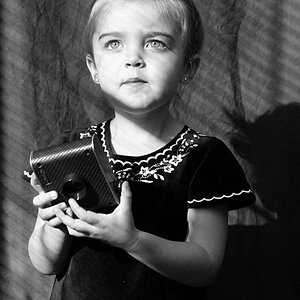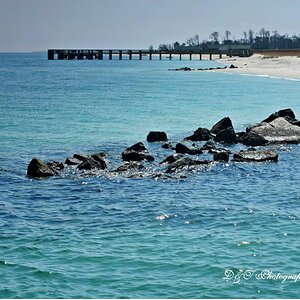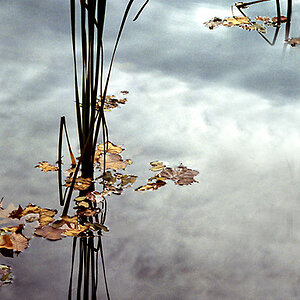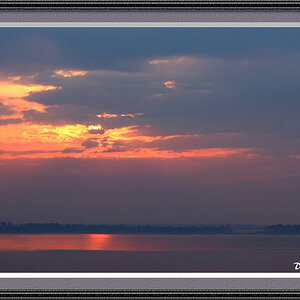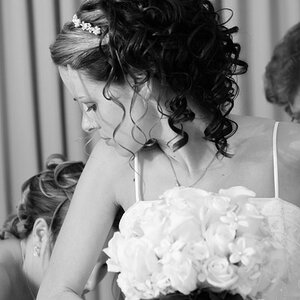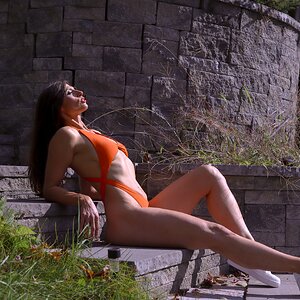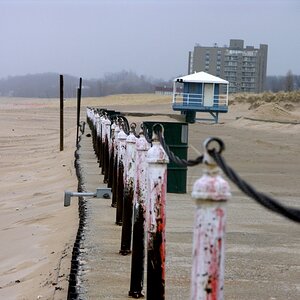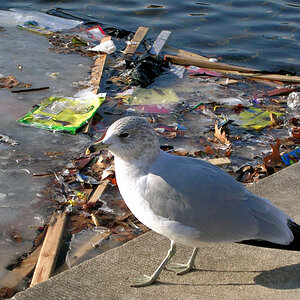SeattleDan
TPF Noob!
- Joined
- Nov 29, 2011
- Messages
- 7
- Reaction score
- 0
- Location
- Seattle
- Can others edit my Photos
- Photos OK to edit
I have a deck facing East and slightly North, overlooking a river, where I watch birds. I live near Seattle, so we have various light challenges... overcast or clouded skies with deep green landscapes, and water. I'm not even up to the "novice" level of photography. I'm just going to take pictures of ducks from my deck.
Sun comes up and fills my living room and deck with direct light, from South, and East until about Eleven AM. Then it goes to my right rear, as I face the targets, South and West, behind the building. But, even in the afternoon, with the clouds, river, buildings etc, reflecting light... I still need a filter.
1. Will a more or less permanent, Circular Polarizer, be effective, or even possible, as a part of the adapter, filter, assembly between the Scope and Camera? It would be more convenient there.
2. Would it be better to have a full objective sized Polarizer over the end? If so, could this effect the ED or HD qualities that I'm wanting from the Coatings on my Objective Lens, for wildlife photography?
3. While I'm at it (although I have a million questions, I'll stop here)... The DSLR or Micro 4/3 have large sensors. But with optical aberration from the scope/lens, I think I read that a "Flattener" would help utilize the full size of the sensor, bringing the outer areas into crisp focus as well. (They use this in Astrophotography). I will usually not want a "doubler;" but more likely will want, a "reducer," for closer focus in terrestrial photography. Will the Circular Polarizer, Flattener, and either Reducer, or Doubler, combined, be just one thing too many?
Can it work?
OK, don't shoot. I was here before with some even more crazy questions and this is what I noticed. Bird Photo guys (not all but some), understand the Physics of photography less than straight up photographers. They depend on fancy schmancy equipment, and while they don't say it outright, what they mean by what they say is "Spend more money." Money's nice, when you can get it, eh?
OK, thanks ya'all.
Dan
edited to add: The Micro 4/3 gizmos, for the time being, with an aftermarket adapter, have the ability to use VERY old school, lenses. While they must be focussed manually, this is an affordable learning opportunity for me, since so many older lenses, of high quality, are available. I'm recently retired/disabled and looking forward to learning more with the free time.
What I'm saying, is, if anyone wants to tell me to throw the telescope away and get conventional lenses, or any other suggestions... that's FINE by me. We can do it all.
thanx
Sun comes up and fills my living room and deck with direct light, from South, and East until about Eleven AM. Then it goes to my right rear, as I face the targets, South and West, behind the building. But, even in the afternoon, with the clouds, river, buildings etc, reflecting light... I still need a filter.
1. Will a more or less permanent, Circular Polarizer, be effective, or even possible, as a part of the adapter, filter, assembly between the Scope and Camera? It would be more convenient there.
2. Would it be better to have a full objective sized Polarizer over the end? If so, could this effect the ED or HD qualities that I'm wanting from the Coatings on my Objective Lens, for wildlife photography?
3. While I'm at it (although I have a million questions, I'll stop here)... The DSLR or Micro 4/3 have large sensors. But with optical aberration from the scope/lens, I think I read that a "Flattener" would help utilize the full size of the sensor, bringing the outer areas into crisp focus as well. (They use this in Astrophotography). I will usually not want a "doubler;" but more likely will want, a "reducer," for closer focus in terrestrial photography. Will the Circular Polarizer, Flattener, and either Reducer, or Doubler, combined, be just one thing too many?
Can it work?
OK, don't shoot. I was here before with some even more crazy questions and this is what I noticed. Bird Photo guys (not all but some), understand the Physics of photography less than straight up photographers. They depend on fancy schmancy equipment, and while they don't say it outright, what they mean by what they say is "Spend more money." Money's nice, when you can get it, eh?
OK, thanks ya'all.
Dan
edited to add: The Micro 4/3 gizmos, for the time being, with an aftermarket adapter, have the ability to use VERY old school, lenses. While they must be focussed manually, this is an affordable learning opportunity for me, since so many older lenses, of high quality, are available. I'm recently retired/disabled and looking forward to learning more with the free time.
What I'm saying, is, if anyone wants to tell me to throw the telescope away and get conventional lenses, or any other suggestions... that's FINE by me. We can do it all.
thanx
Last edited:


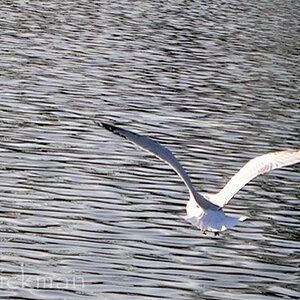

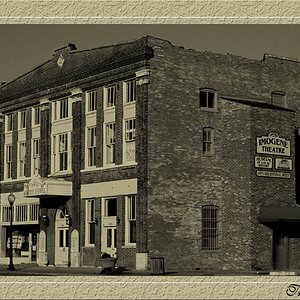
![[No title]](/data/xfmg/thumbnail/41/41898-2c70795ddfa6b397714acc28e3e5d36f.jpg?1619739936)
